Photo Page |
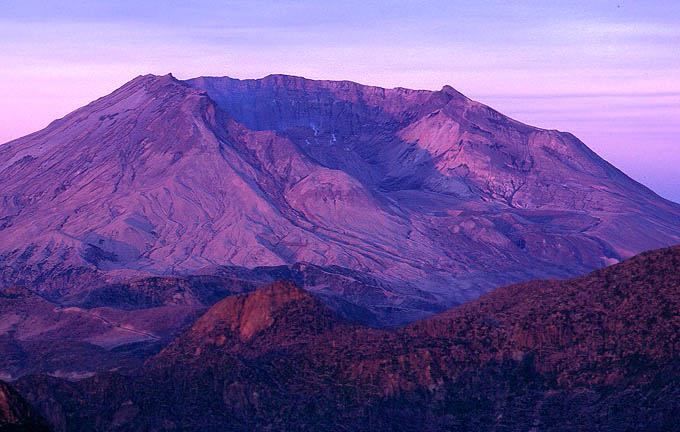 Mount St. Helens at sunrise, as it appeared in 1988 from the Northeast. | 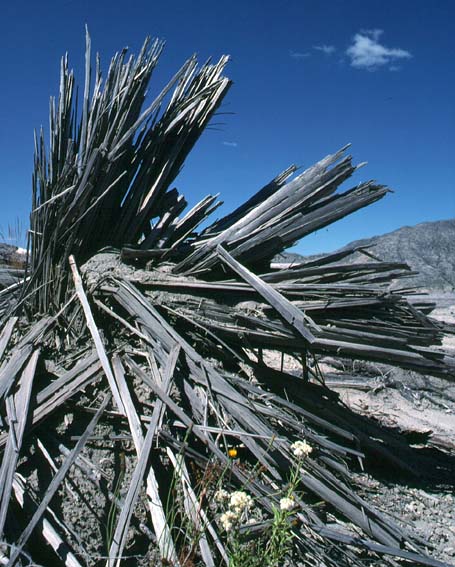 Tree trunk near Windy Ridge, 1988. Note how after only eight years flowers are growing already. | 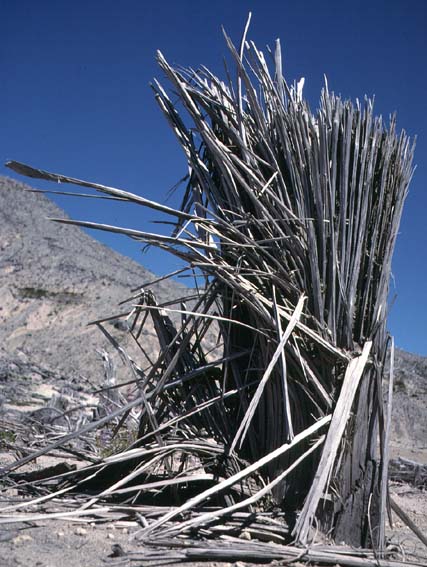 Tree trunk near Windy Ridge, 1988. How to illustrate better the tremendous force of the explosion's lateral blast! | 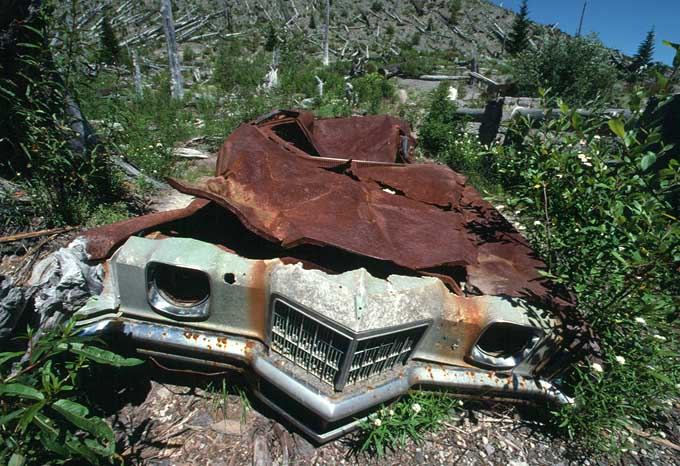 «Miner's car». This destroyed car is located near Meta Lake, some 15 kilometers from Mount St. Helens' crater (2001 photo). |
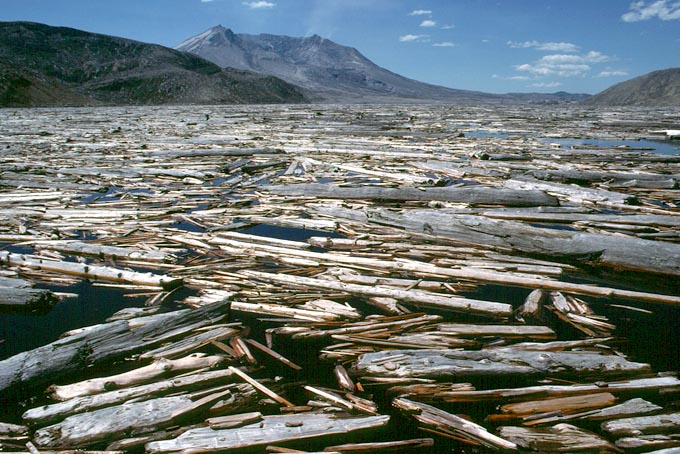 Tree trunks floating on Spirit Lake in 1988. The wood is drifting this way and that according to the actual wind direction. | 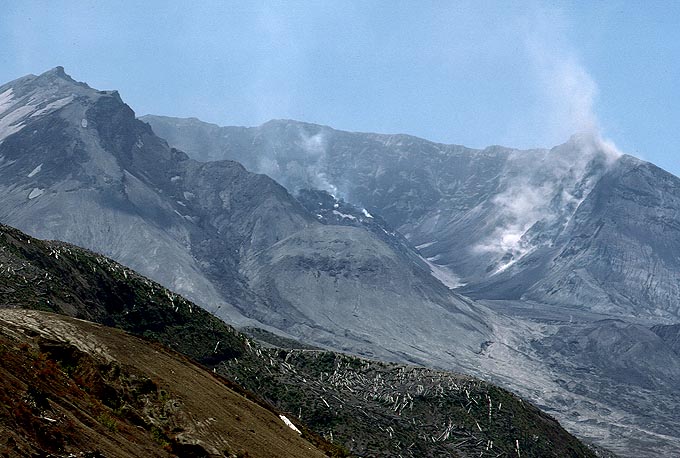 Crater from Spirit Lake, tele photo lens, 1988: What appears like volcanic steam (right) is in fact dust caused by rockfalls on the inside of the crater wall. The lava dome (center) is, however steaming slightly. | 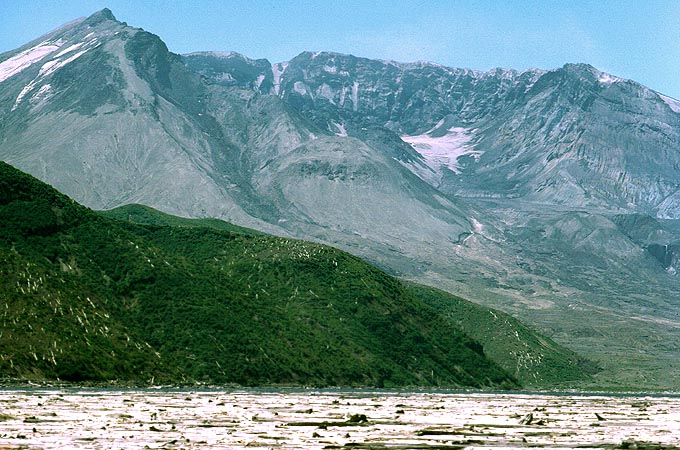 Similar view 2001: Dust caused by rock falls on the crater's inner walls seems to be less common now. A small glacier has formed around the central lava dome (just visible to the right of the dome). | 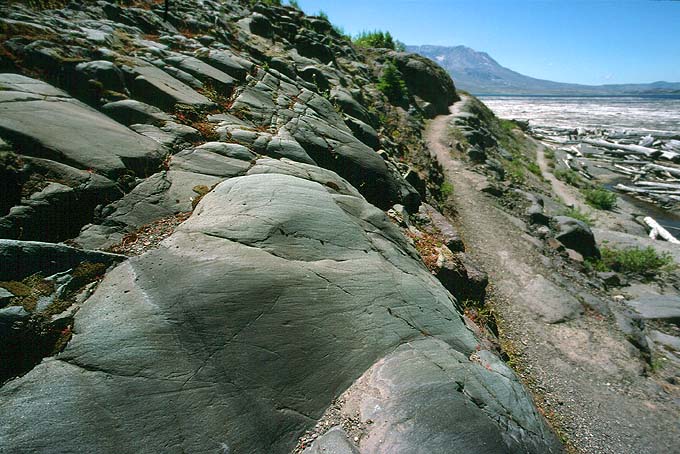 Glacial striae near Spirit Lake's northeastern shore. These scratch marks were caused by glacial erosion during the last pleistocene glaciation which ended about 12'000 years ago (2001 photo). |
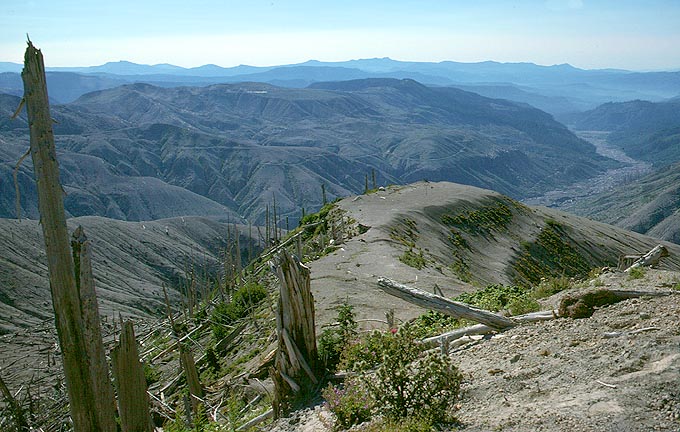 Damage to forest near Independence Pass. Mount St. Helens is to the right: Tree trunks on the left of the ridge had a somewhat better chance of staying upright than the ones on the right (1988). | 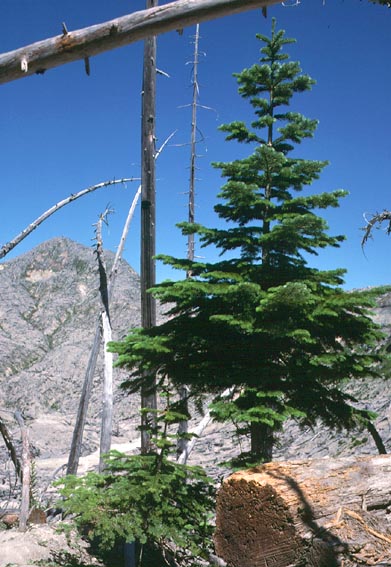 Things around Mount St. Helens are not always what they seem (1988 photo). These two trees are not regrowths from after the eruption. Instead they were small enough to survive the lateral blast under a local snow cover. | 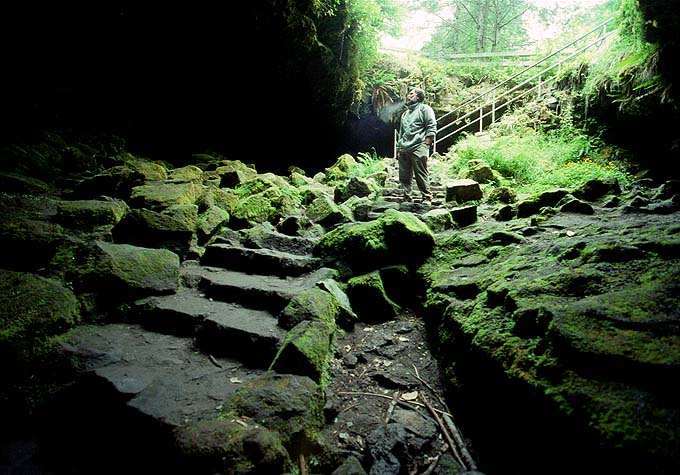 Entrance to Ape Cave in 2001, a lava tube formed from an eruption 1900 years ago.This cave is the longest continuous lava tube in the continental USA. | 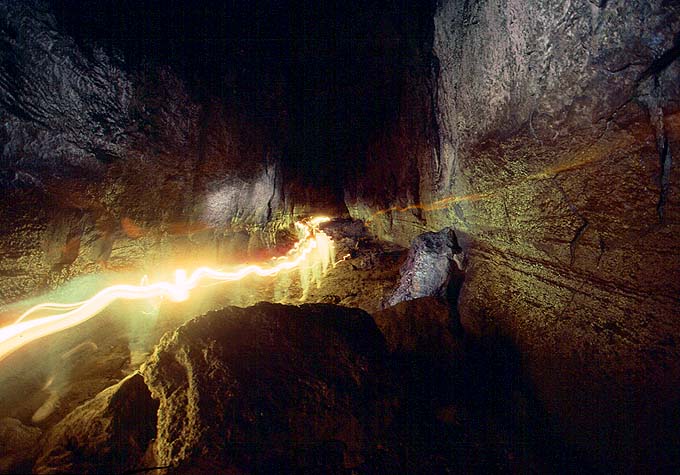 Visitors to the lower part of Ape cave pass us carrying lanterns and flashlights. Note the clear benchmarks on the walls of the cave marking the level of lava flows passing through the lava tunnel and then draining from it (2001). |
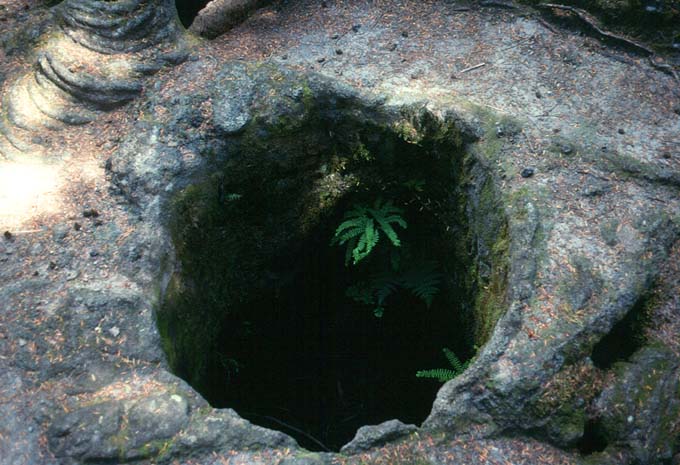 Tree cast near Ape Cave (1988). During an effusive eruption some 1900 years ago a lava flow engulfed a tree. Lava of low viscosity was necessary to create this and the nearby lava tunnels, illustrating changes in eruptive style of Mount St. Helens. | 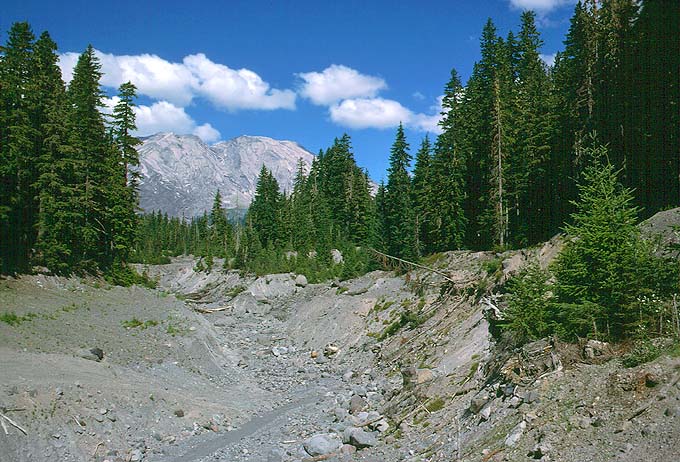 Near Lahar viewpoint in 1988, view towards Mount St. Helens. A small lahar descended through this gully. As the eruptive blast was directed towards the North, forests survived on the volcano's South side apart from those areas affected by lahars. | 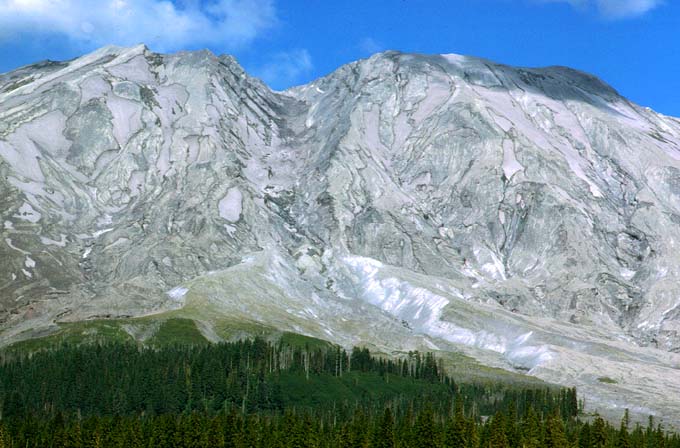 Mount St. Helens from Lahar viewpoint in 1988, tele photo lens. Remnants of what was once Shoestring Glacier can be seen in the gully descending from the crater rim (center). | 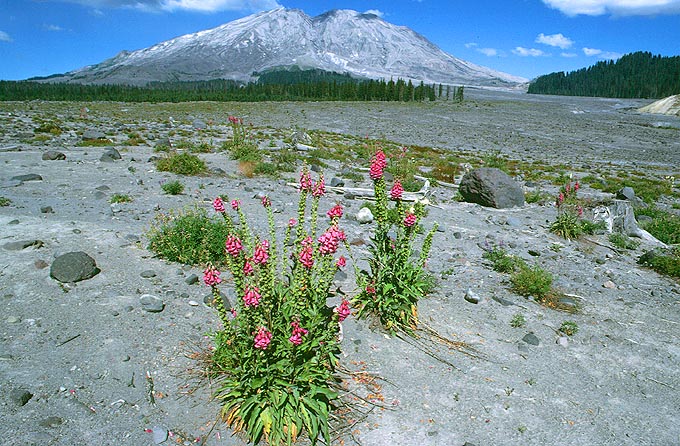 Mount St. Helens from Lahar viewpoint in 1988, where all trees were destroyed by a big lahar caused by melting of snow and ice during the eruption. Note Purple Foxglove (Digitalis purpurea) colonizing the barren area. |
|